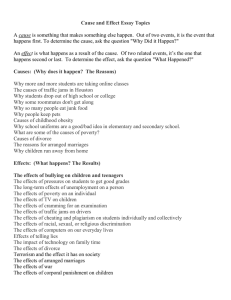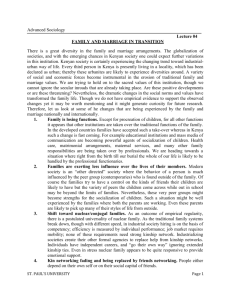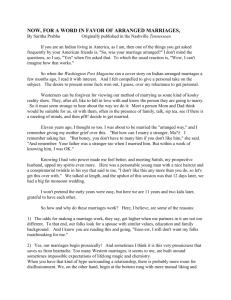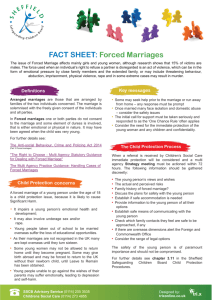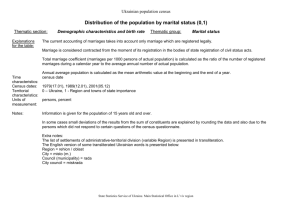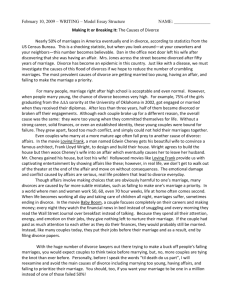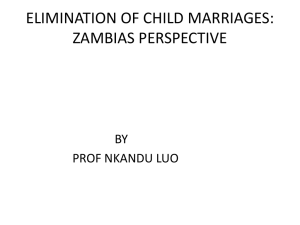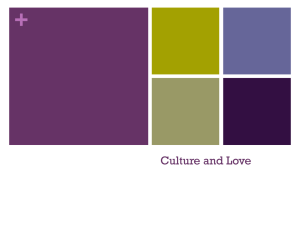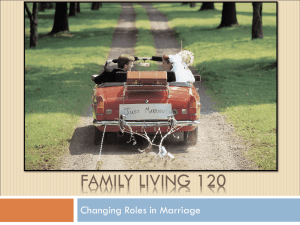The New Monogamy
advertisement
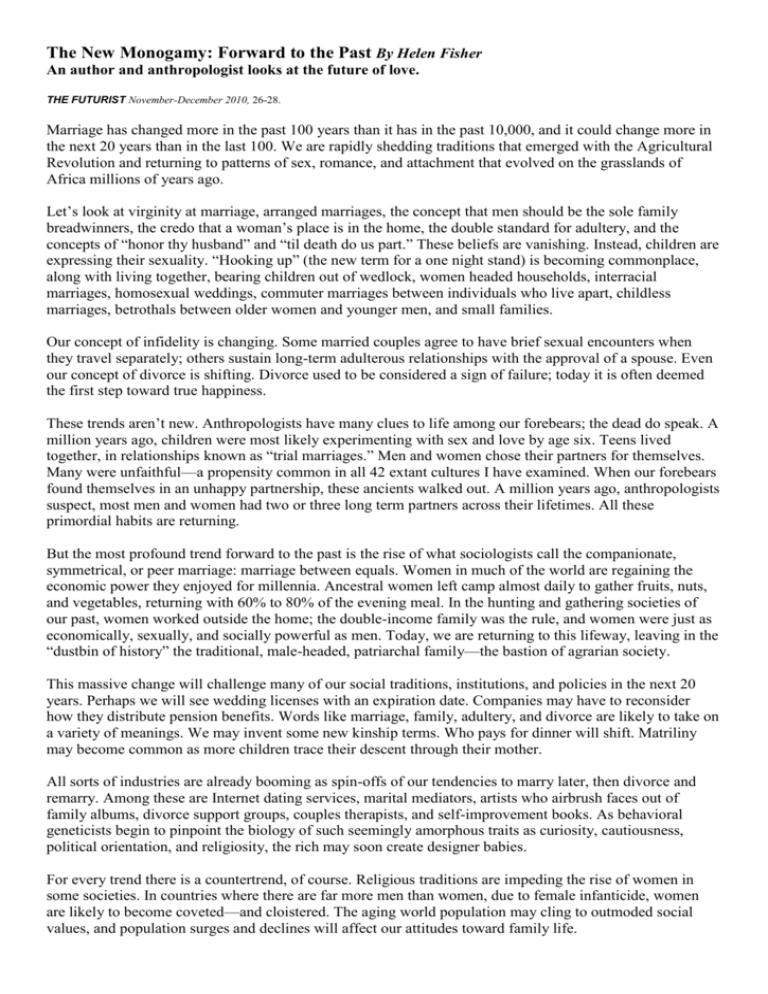
The New Monogamy: Forward to the Past By Helen Fisher An author and anthropologist looks at the future of love. THE FUTURIST November-December 2010, 26-28. Marriage has changed more in the past 100 years than it has in the past 10,000, and it could change more in the next 20 years than in the last 100. We are rapidly shedding traditions that emerged with the Agricultural Revolution and returning to patterns of sex, romance, and attachment that evolved on the grasslands of Africa millions of years ago. Let’s look at virginity at marriage, arranged marriages, the concept that men should be the sole family breadwinners, the credo that a woman’s place is in the home, the double standard for adultery, and the concepts of “honor thy husband” and “til death do us part.” These beliefs are vanishing. Instead, children are expressing their sexuality. “Hooking up” (the new term for a one night stand) is becoming commonplace, along with living together, bearing children out of wedlock, women headed households, interracial marriages, homosexual weddings, commuter marriages between individuals who live apart, childless marriages, betrothals between older women and younger men, and small families. Our concept of infidelity is changing. Some married couples agree to have brief sexual encounters when they travel separately; others sustain long-term adulterous relationships with the approval of a spouse. Even our concept of divorce is shifting. Divorce used to be considered a sign of failure; today it is often deemed the first step toward true happiness. These trends aren’t new. Anthropologists have many clues to life among our forebears; the dead do speak. A million years ago, children were most likely experimenting with sex and love by age six. Teens lived together, in relationships known as “trial marriages.” Men and women chose their partners for themselves. Many were unfaithful—a propensity common in all 42 extant cultures I have examined. When our forebears found themselves in an unhappy partnership, these ancients walked out. A million years ago, anthropologists suspect, most men and women had two or three long term partners across their lifetimes. All these primordial habits are returning. But the most profound trend forward to the past is the rise of what sociologists call the companionate, symmetrical, or peer marriage: marriage between equals. Women in much of the world are regaining the economic power they enjoyed for millennia. Ancestral women left camp almost daily to gather fruits, nuts, and vegetables, returning with 60% to 80% of the evening meal. In the hunting and gathering societies of our past, women worked outside the home; the double-income family was the rule, and women were just as economically, sexually, and socially powerful as men. Today, we are returning to this lifeway, leaving in the “dustbin of history” the traditional, male-headed, patriarchal family—the bastion of agrarian society. This massive change will challenge many of our social traditions, institutions, and policies in the next 20 years. Perhaps we will see wedding licenses with an expiration date. Companies may have to reconsider how they distribute pension benefits. Words like marriage, family, adultery, and divorce are likely to take on a variety of meanings. We may invent some new kinship terms. Who pays for dinner will shift. Matriliny may become common as more children trace their descent through their mother. All sorts of industries are already booming as spin-offs of our tendencies to marry later, then divorce and remarry. Among these are Internet dating services, marital mediators, artists who airbrush faces out of family albums, divorce support groups, couples therapists, and self-improvement books. As behavioral geneticists begin to pinpoint the biology of such seemingly amorphous traits as curiosity, cautiousness, political orientation, and religiosity, the rich may soon create designer babies. For every trend there is a countertrend, of course. Religious traditions are impeding the rise of women in some societies. In countries where there are far more men than women, due to female infanticide, women are likely to become coveted—and cloistered. The aging world population may cling to outmoded social values, and population surges and declines will affect our attitudes toward family life. Adding to this mix will be everything we are learning about the biology of relationships. We now know that kissing a long-term partner reduces cortisol, the stress hormone. Certain genes in the vasopressin system predispose men to make less-stable partnerships. My colleagues and I have discovered that the feeling of romantic love is associated with the brain’s dopamine system—the system for wanting. Moreover, we have found that romantic rejection activates brain regions associated with profound addiction. Scientists even know some of the payoffs of “hooking up.” Casual sex can trigger the brain systems for romantic love and/or feelings of deep attachment. In a study led by anthropologist Justin Garcia, some 50% of men and women reported that they initiated a hook up in order to trigger a longer partnership; indeed, almost a third of them succeeded. What will we do with all these data? One forward-thinking company has begun to bottle what our forebears would have called “love magic.” They sell Liquid Trust, a perfume that contains oxytocin, the natural brain chemical that, when sniffed, triggers feelings of trust and attachment. We are living in a sea of social and technological currents that are likely to reshape our family lives. But much will remain the same. To bond is human. The drives to fall in love and form an attachment to a mate are deeply embedded in the human brain. Indeed, in a study I just completed on 2,171 individuals (1,198 men, 973 women) at the Internet dating site Chemistry.com, 84% of participants said they wanted to marry at some point. They will. Today, 84% of Americans wed by age 40—albeit making different kinds of marriages. Moreover, with the expansion of the roles of both women and men, with the new medical aids to sex and romance (such as Viagra and estrogen replacement), with our longer life spans, and with the growing social acceptance of alternative ways to bond, I believe we now have the time and tools to make more-fulfilling partnerships than at any time in human evolution. The time to love is now. ❏ About the Author Helen Fisher is a research professor in biological anthroplogy at Rutgers University and chief scientific advisor of Chemistry.com. Her most recent book is Why We Love: The Nature and Chemistry of Love (Henry Holt, 2010).
